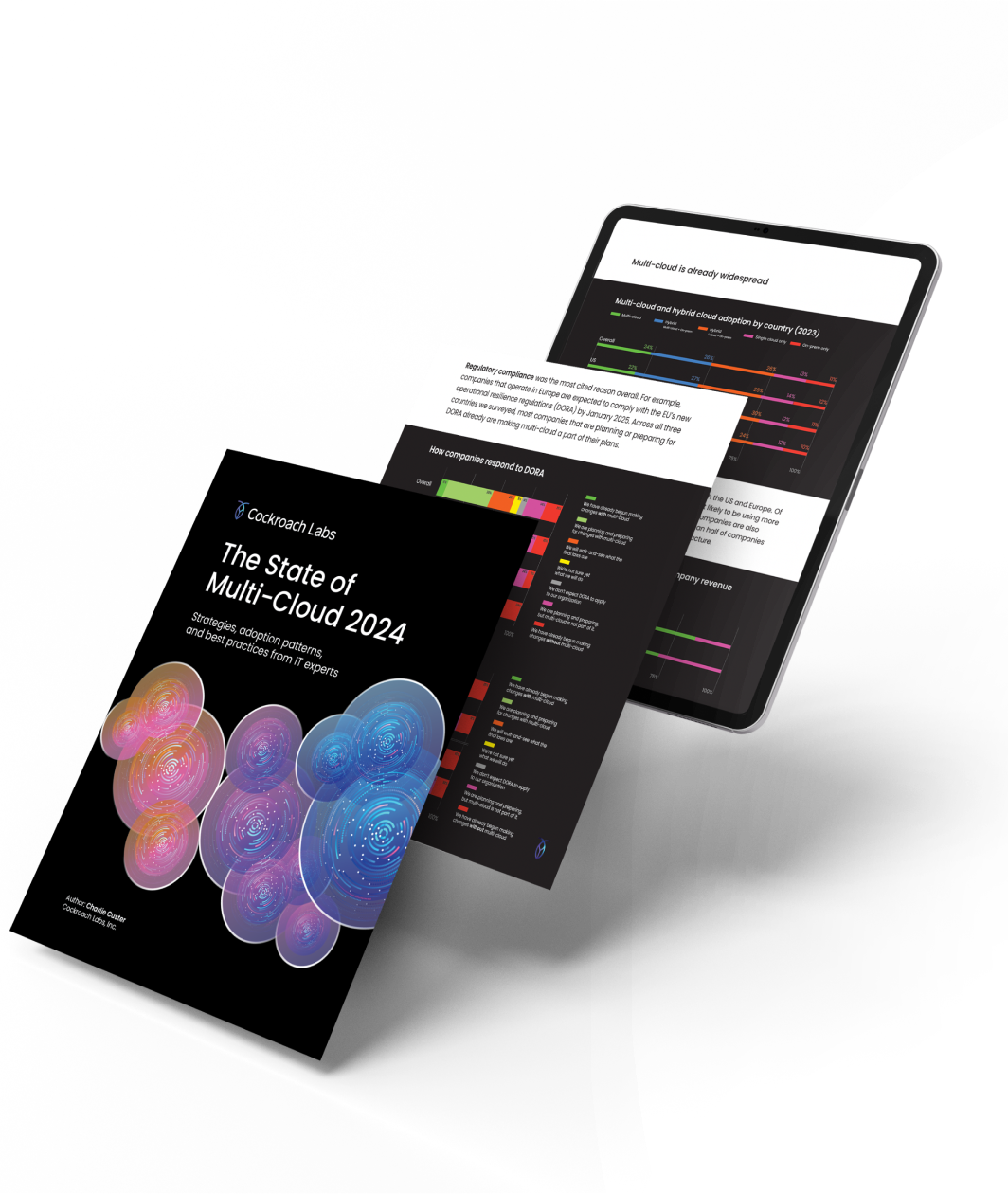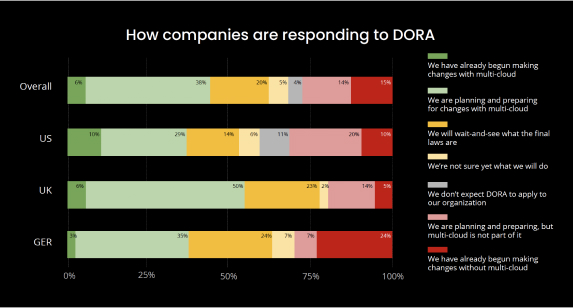What’s in the report?

Methodology:
This report is part quantitative analysis of a research study was sponsored by Cockroach Labs and conducted by Wakefield Research (www.wakefieldresearch.com) among 300 cloud architects and engineers in the US, UK, and Germany, and part first-person experience from on-the-ground experts who are building multi-cloud products. (Additional methodology details are available in the report).
CockroachDB: distributed SQL,
built for the cloud.
Enterprises and emerging leaders alike trust CockroachDB.
Most companies preparing for DORA are making multi-cloud a part of their plans.
Free report download